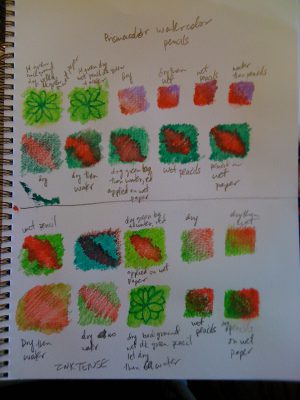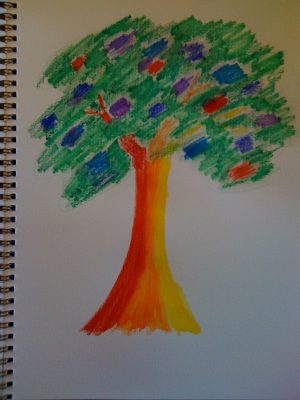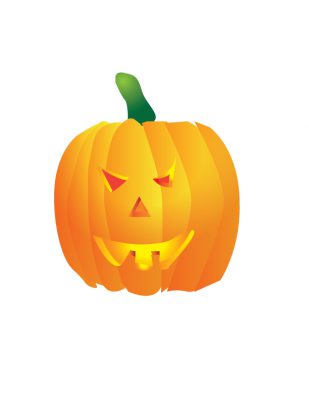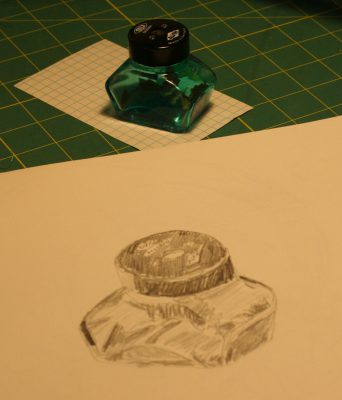Here, for the curious, is the result of yesterday’s plane flight:

And here is this morning’s doodle:

Drawing, particularly in color, is a dicey thing for me. Because it’s an unfamiliar medium, I don’t have a lot of skills to draw on, and am thus acutely self-conscious about starting a piece, because I “know” it’s not going to be good. (See prior blog post on the gap between excellent taste and nascent skills.) As a result, I tend to go blank when confronted with a sheet of paper. In fact, I wasn’t entirely certain the pencils wouldn’t explode if I (a novice) actually touched them to the paper.
This, of course, gave birth to the first page of doodles. My first approach to something new is to conduct a series of systematic experiments, dissecting it and trying to understand how it is structured, how it works, and how to design it. So, to overcome the terror of total blankness, I did a small doodle, then repeated it in different variations – wet pencils vs. dry pencils, wetting the paper after applying the pencils, wetting the paper and then applying pencils. For good measure, I repeated the experiment using the second set of pencils.
After establishing that the pencils did not explode (hooray!) , I proceeded to read through my book on watercolor pencils. Then I turned back to the pad of paper. Zounds! Was that another blank sheet of paper? I tried thinking of something to sketch and drew a total blank. I hastily put the pad and pencils away, hiding them in my carry-on, and read a book for the rest of the flight.
This morning I got up and decided to try again. I had convinced myself earlier that morning that my inability to draw representational art didn’t have to be a barrier; after all, one rarely sees elaborate drawings of peacocks and elephants on handwoven garments. I could do abstract stuff instead, which would be more appropriate to what I was doing anyway.
So I started with a ribbon of red pencil, then a ribbon of orange, then a ribbon of yellow. Somewhere along the lines I realized that they resembled the trunk of a tree, so I added a scribble of green foliage and a few scribbles of color in blues, purples, and reds. It didn’t come out as dark as I wanted, so I wetted down the paper, and (remembering the results of yesterday’s experiments) redrew the foliage on wet paper, giving much more intense colors.
And there you have it! One doodle, a psychedelic tree. I like it, though it looks like a child’s scrawl. To me the important part is that I did it – and enjoyed doing it – which is, of course, ninety percent of the battle.
So why is this blog post titled “Planning vs. playing”? Because my watercolor pencil process illustrates something vital: the importance of playing around, especially when taking up a new art/craft. As adults, we tend to get very goal-focused, feeling somewhat self-conscious about “just playing around”, but as I wrote in this essay, playing is essential, since at the outset, your skills aren’t likely to be up to your ambitions. So I’m deliberately turning off the planning section of my brain and “working on” just enjoying the process.
Mind you, developing skills is important – and I’ll probably do some drawing exercises later today – but for now, I’m trying to let go of the (overdeveloped) planning sections of my brain, and just enjoy doodling.

